Ancients - Immense 1,900-Year-Old Slab Found Underwater Names Forgotten Roman Ruler During Bloody Jewish Revolt
A team of researchers from the University of Haifa have recently discovered a rare inscription from the period prior to the Bar Kochba revolt. The enlightening discovery allows historians to finally identify Gargilius Antiquus as the Roman governor of Judea at that time. This huge stone slab was discovered underwater off the coast of Israel in an area rich with important artifacts.
One of the Most Important Moments in Jewish History: The Bar Kokhba Revolt
The Bar Kokhba (Kochba) revolt was a rebellion created by the Jews of the Roman province of Judea against the Roman Empire. It took place around 132–136 AD and was the last of three major Jewish–Roman wars. Around that time, the Jewish rebels were hiding in caves in order to be able to perform their mitzvahs. When they were discovered by Roman authorities they usually resisted, but they were not always successful.
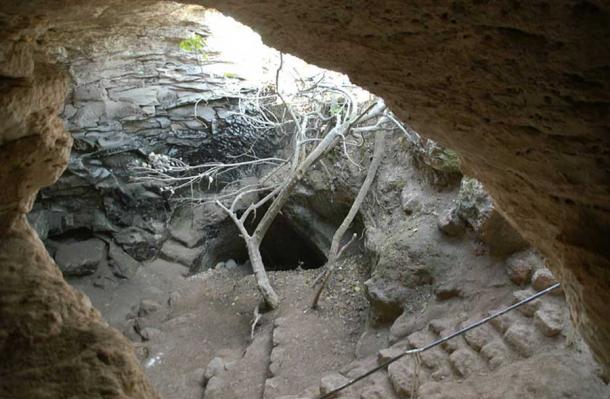
Entrance to a cave used by Bar Kochba rebels. (udi Steinwell/CC BY 2.5)
These continuous battles gave birth to a legend in the form of a brave warrior named Simeon bar Kosevah, who unified the disparate armed Jewish groups into a fighting force which could capture Jerusalem from the Romans. Kosevah further proclaimed himself as the Messiah and became known as Bar Kokhba, which means son of a star (based on a verse in the Torah that likens the Messiah to a star.) But, Bar Kokhba was not a Messiah by any degree, and soon he became recognized as a ruthless leader, punishing any Jew who refused to join his ranks.
- Hoard of 2,150-year-old silver coins found in Modiin, Israel
- Ruins of Ancient Winery and Roman Bathhouse Unearthed in Jerusalem
The hopes of the Jewish people were quickly dashed, and they started calling Bar Kochba "Bar Koziba," meaning son of a lie. The final “episode” of the rebellion took place in Bethar, Bar-Kokhba’s headquarters, which housed both the Jewish High Court and Kokhba’s home. After a bloody battle, every Jew in Bethar was killed. The victorious Romans wouldn’t allow the other Jews to bury their dead for almost a week as punishment for their resistance.
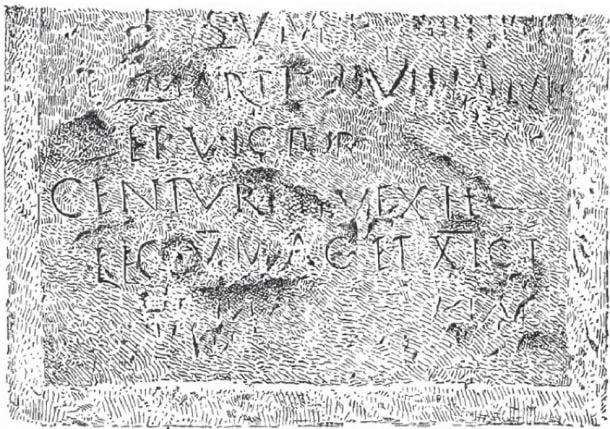
Drawing of a Roman Inscription found near Battir mentioning the 5th and 11th Roman Legions. (Public Domain)
The Slab’s Inscription
The immense chunk of stone the archaeologists have recently discovered dates to the 2nd century AD and was found during the University of Haifa’s underwater exploration of Tel Dor, an archaeological site located nearly 18 miles (29 km) south of the city of Haifa. Over the past seven decades, Tel Dor has been recognized as a “store” of extremely valuable objects of pottery, anchors, and other artifacts from ancient Israel.
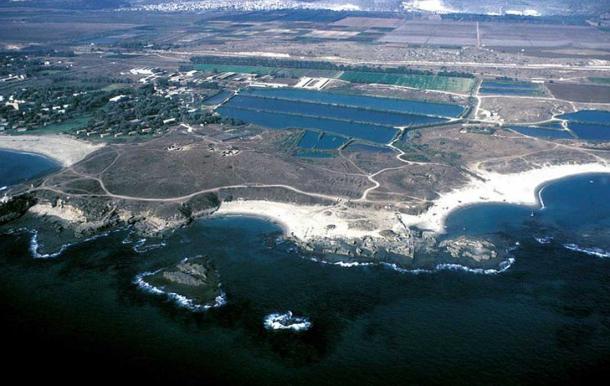
Aerial view of Tel Dor, Israel. (המרכז למדיהדיגיטלית, אוניברסיטת חיפה, הספריה/CC BY 2.5)
The new archaeological find leaves no doubt about its date and era, according to Dr. Assaf Yasur-Landau, who directed the underwater excavation, and Dr. Gil Gambash, who read the inscription with Yasur-Landau, “For the first time, we can identify with certainty the name of the Roman governor (Gargilius Antiquus) of Judea during the critical period leading up to the Bar Kochba revolt. Apart from that, this is only the second time that the name ‘Judea’ has appeared on an inscription from the Roman period,” they commented on the University of Haifa website.
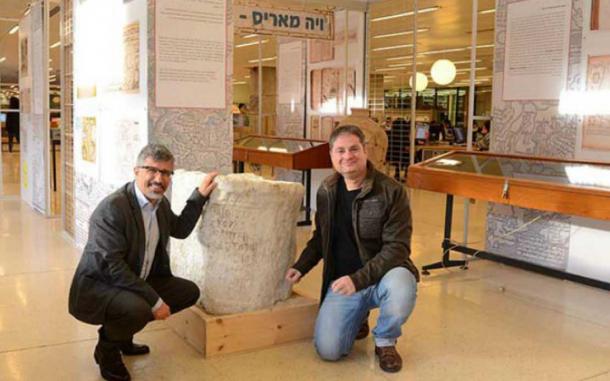
Dr. Gil Gambash, left, and Dr. Assaf Yasur-Landau with the large stone inscription. (Jenny Carmel)
Yasur-Landau also focused on the historic-geographical significance of this inscription, saying:
“Immediately after the Bar Kokhba revolt, the Romans decided to abolish the province of Judea and to obliterate any mention of its name. The province was united with Syria to form a single province called Syria-Palestine. So what we have here is an inscription dated to just before Judea ceased to exist as a province under that name. Of the two inscriptions mentioning the name Judea, this is the latest, of course. Because such findings are so rare, it is unlikely that we will find many later inscriptions including the name Judea.”
- Ancient tablet dedicated to Emperor Hadrian may explain mystery of Jewish revolt
- Hiker Finds Extremely Rare Gold Coin in Israel
The Longest Inscription Found Underwater in Israel
The massive slab that weighs about 1,300 lbs. (589.67 kg.) also includes seven lines of ancient Greek inscribed upon it. According to Assaf Yasur-Landau, it’s probably the longest inscription ever found in the local waters, “The stone probably formed the base of a sculpture from the Roman period. As far as we know, this is the longest inscription found underwater in Israel.”
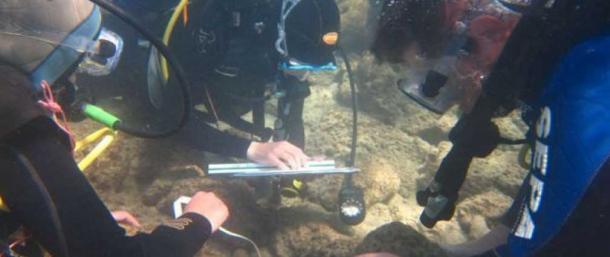
Haifa University underwater archaeologists exploring the seabed at Tel Dor. (Ehud Arkin Shalev)
The researchers say it wasn’t just the length of the inscription that impressed them, but also the fact that it was clearly visible, even beneath the water. The people who participated in the underwater excavation did their best not to damage it while bringing the slab out of the water.
Despite all the information the inscription has already offered, archaeologists feel that they have not completely deciphered the text yet and suggest it’s possible that even more valuable details might be hidden within it.
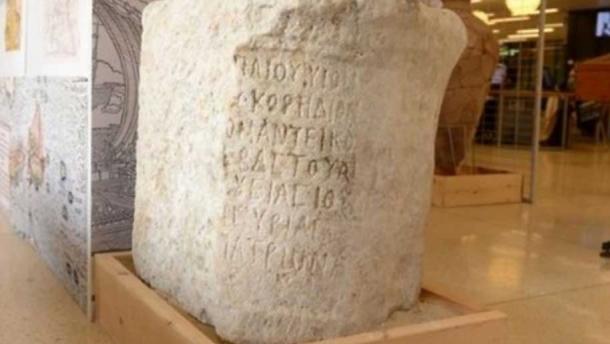
The inscription bearing the name of Gargilius Antiquus, a Roman ruler of Judea. (University of Haifa)

No comments:
Post a Comment